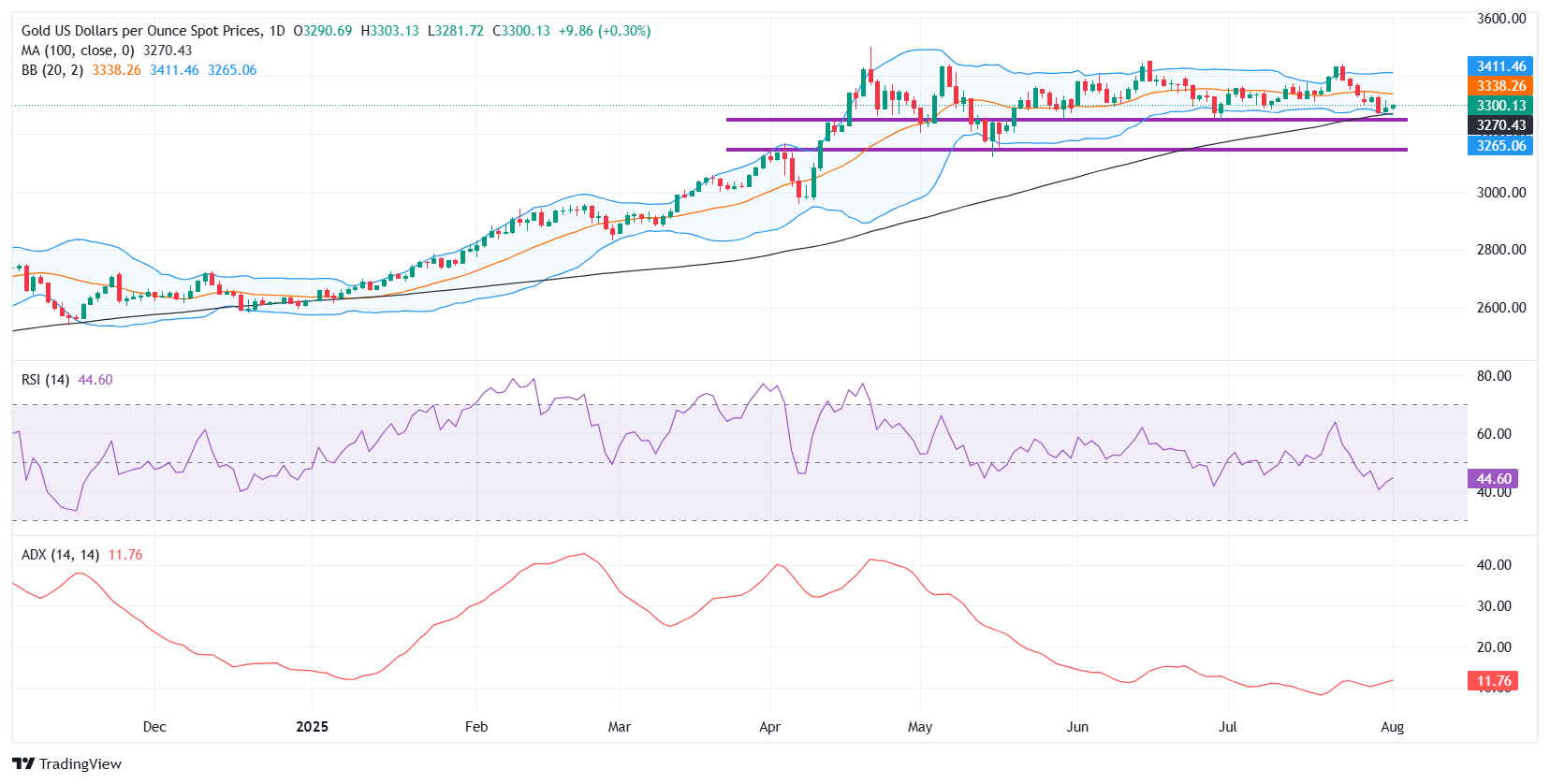Physical Address
304 North Cardinal St.
Dorchester Center, MA 02124
Physical Address
304 North Cardinal St.
Dorchester Center, MA 02124

Gold (XAU/USD) is treading water on Friday, hovering near $3,300 during the European trading hours as a resilient US Dollar (USD) caps gains in the precious metal. The Federal Reserve’s (Fed) decision to keep interest rates unchanged in its July monetary policy meeting, while signaling a data-dependent hawkish stance for future action, has led markets to scale back bets on a September rate cut.
The reduced probability of near-term interest rate cuts underpinned by a string of upbeat US economic data, such as resilient Gross Domestic Product (GDP) growth, sticky inflation and a solid labor market, is driving the US Dollar up and pressuring non-yielding assets like Gold. Market focus now shifts to the high-impact Nonfarm Payrolls (NFP) report, due this Friday at 12:30 GMT, which could further shape interest rate expectations and drive fresh momentum in Gold prices.
Gold rebounded sharply on Thursday after hitting a one-month low on Wednesday, but couldn’t hold those gains overnight with sellers pushing the price below $3,300, as sustained strength in the US Dollar dented sentiment, driving prices back below this psychological level. A strong Greenback raises the opportunity cost of holding non-yielding assets. While price action remains confined within a familiar range on Friday, reflecting market indecision ahead of the NFP report, ongoing US tariff tensions are offering some support and helping to limit downside pressure.

On the daily chart, XAU/USD is trading sideways around the $3,300 mark after dropping to a one-month low on Wednesday. Since then, price action has been consolidating in a narrow range, showing no clear directional bias.
The $3,270-$3,250 zone marks the first key support, aligned with the 100-day Exponential Moving Average (EMA) and a prior demand area. A decisive break below this level could open the door toward deeper support near $3,150. On the upside, immediate resistance stands at $3,350, which coincides with the middle Bollinger Band.
Momentum indicators paint a cautious picture. The Relative Strength Index (RSI) sits at 44, reflecting bearish sentiment while pointing to the neutral line. The Average Directional Index (ADX) remains extremely low at 11.76, indicating a lack of trend strength and overall market indecision.
Gold may continue to consolidate in its current trading range unless the July NFP report sparks a strong market reaction.
The Nonfarm Payrolls release presents the number of new jobs created in the US during the previous month in all non-agricultural businesses; it is released by the US Bureau of Labor Statistics (BLS). The monthly changes in payrolls can be extremely volatile. The number is also subject to strong reviews, which can also trigger volatility in the Forex board. Generally speaking, a high reading is seen as bullish for the US Dollar (USD), while a low reading is seen as bearish, although previous months’ reviews and the Unemployment Rate are as relevant as the headline figure. The market’s reaction, therefore, depends on how the market assesses all the data contained in the BLS report as a whole.